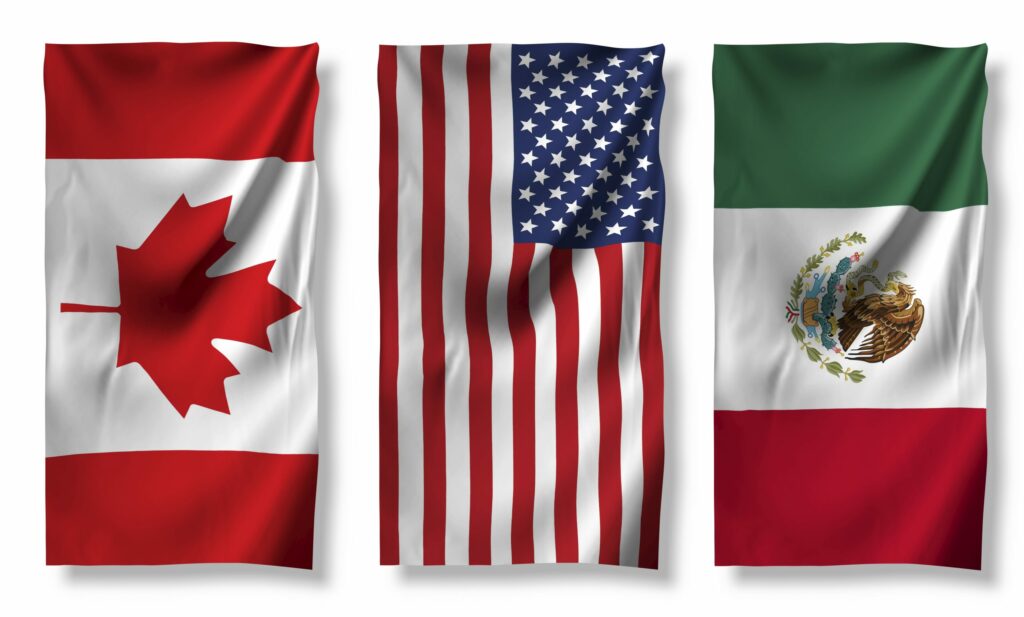By Becky Rasdall, vice president, trade policy and international affairs, IDFA
On the brink of three years of the U.S.-Mexico-Canada Agreement (USMCA), IDFA reflects on the ups and downs of the United States’ only full and comprehensive preferential trade agreement to be finalized in a decade.
Taking the bad news first, the downs of USMCA: IDFA members have yet to receive the full range of dairy access promised by Canada under the Agreement. Let’s break down Canada’s practices that are inhibiting imports from the United States and that are being challenged under USMCA’s dispute resolution processes:
In 2020, the United States complained that Canada was, chief among other concerns, reserving a percentage of its lower tariff import quotas (i.e. tariff-rate quotas or TRQs) of dairy products for its own dairy processors who have no incentive to import U.S. products that they themselves produce. The USMCA dispute panel agreed with the U.S., and Canada responded by removing the percentage reservation, while tweaking its formulas for calculating how much quota would be allocated to whom. The result was that Canada effectively began giving its own processors even more of the import quotas than it had with the percentages in place. Many would-be Canadian importers complained of being too small a business or too new to be able to effectively maneuver the behemoth Canadian system of rules for obtaining import quota, and those who did finally apply were frequently awarded licenses to import as little as just one kilogram of dairy for the entirety of the quota year. Never mind that the average consumer likely eats more than one kilogram of cheese, ice cream, or other favorite dairy products in two weeks, it begs the question of what Canada thinks about their obligation to award quota to importers in commercially viable quantities. (Does Canada really expect an importer to buy just one kilogram of cheese, hire a semi-truck, put the one kilogram of cheese in the back, then cut it into small palm-sized portions that will last keep their profits afloat until next year?) These are just a few of the Canadian allocation policies that are constantly manipulated to keep quota out of the hands of legitimate importers in Canada, but there are many more under dispute.
But now for the ups of USMCA: Thankfully, the Office of the U.S. Trade Representative (USTR) and the U.S. Department of Agriculture (USDA) have worked tirelessly to understand, gather evidence, and fight back against Canada’s failure to live up to its USMCA obligations. In an unprecedented, marathon-style pursuit of enforcement, the U.S. government has doggedly initiated one dispute after another as Canada has shifted its tariff-rate quota administration policies from one method of favoring its domestic processors to another. Now in the middle of the second dispute with Canada on these policies, the U.S. government’s efforts are so inspiring that New Zealand has initiated a similar dispute of its own that was later joined by Singapore, Mexico, Australia, and Japan. That dispute recently finished its oral hearings, in which multiple parties pointed to USMCA throughout the arguments. IDFA applauds our U.S. government colleagues for establishing USMCA and its enforcement as a global precedent that others can aspire to.
Despite the trade barrier with Canada, however, IDFA members have benefitted from USMCA’s existence since its onset and continue to benefit from the enforcement tools it contains. We may have disputes to pursue, but that doesn’t minimize the value of USMCA and other similar trade policy tools; on the contrary, it increases their value. For example, without USMCA, we would have no recourse to fight Canada’s protectionist import barriers, no opportunity for any increased access to Canada, no science- and risk-based commitments that have been pointed to globally as the new gold standard.
These are just a handful of benefits in one sector of our trade; imagine the possibilities in store for U.S. dairy’s future if an Administration were to finalize a full and comprehensive agreement with a new market? Outside of USMCA, dairy exporters have not seen an FTA be finalized since 2012. Nonetheless, the trade data showing the value of FTAs to U.S. agricultural exporters is undisputable – U.S. agricultural exports to FTA partners increase consistently and significantly over time as barriers and tariffs come down after entry into force.
Congressional offices regularly tell IDFA that Trade Promotion Authority (TPA), the legislation needed to facilitate FTA negotiations, is not possible until the White House indicates their interest in advancing TPA and helping with its passage. Unfortunately, the Administration has to this point been unwilling to do so. Instead of acknowledging there are imperfections to TPA and previous agreements and working through them, the conversation has stopped entirely.
Where does that leave dairy exporters? Today, as we prepare to celebrate USMCA’s anniversary, IDFA has the following message for the Administration and Congress: equitable trade policies that serve all must include tariff-reducing negotiations for U.S. dairy exporters. It is time not to talk about inclusive and open trade policies, but to simply talk openly and inclusively at all about what works and what does not and find the middle ground. Let’s restart the conversation on TPA and make sure we don’t re-enter another decade without a new FTA.
IDFA Staff Expert

Becky Rasdall Vargas
Senior Vice President, Trade and Workforce Policy

